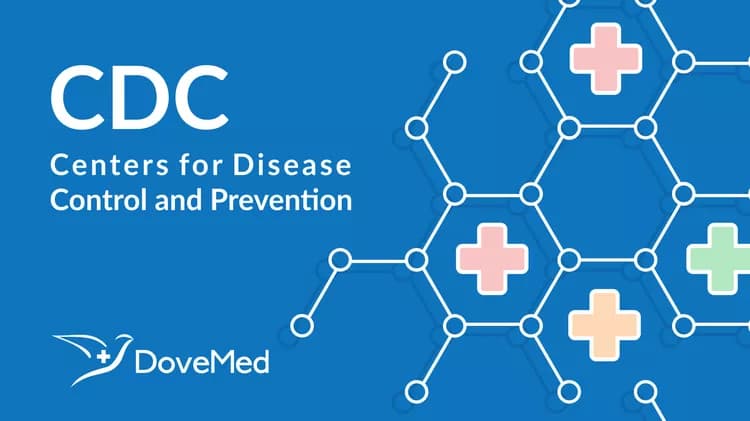
New Study Finds Higher Than Expected Number Of Suicide Deaths Among U.S. Veterinarians
Veterinarians in the U.S. are at an increased risk of suicide, a trend that has spanned more than three decades, according to a new CDC study published in the Journal of the American Veterinary Medical Association (JAVMA)
The study is the first to show increased suicide mortality among female veterinarians. Female veterinarians were 3.5 times as likely, and male veterinarians were 2.1 times as likely, to die from suicide as the general population. Seventy-five percent of the veterinarians who died by suicide worked in a small animal practice.
Since 2000, the proportion of female veterinarians who died by suicide has remained stable at 10 percent; however, the number of deaths has increased steadily. An earlier study by the National Institute for Occupational Safety and Health (NIOSH) found female veterinarians have a higher prevalence of risk factors for suicide including experiencing depression and suicide ideation and attempts. Today, more than 60 percent of U.S. veterinarians are women. In 2017, of the 110,531 veterinarians in the U.S, 66,731 were female and 43,662 were male.
“Our findings suggest mortality from suicide among veterinarians has been high for some time — spanning the entire 36-year period we studied,” said CDC Director Robert R. Redfield, M.D. “This study shines a light on a complex issue in this profession. Using this knowledge, we can work together to reduce the number of suicides among veterinarians.”
As in the general population, firearms were the most commonly used method of suicide among veterinarians. However, 37 percent of suicide deaths among veterinarians were caused by pharmaceutical poisoning, which is 2.5 times higher than pharmaceutical poisoning among the general U.S. population. Sixty-four percent of deaths among women and 32 percent of suicide deaths among men in the veterinary profession were from this type of poisoning.
For this study, NIOSH researchers looked at records from 11,620 veterinarians who died during the years 1979-2015. Data for the study came from the American Veterinary Medical Association (AVMA) and CDC’s National Center for Health Statistics. The AVMA maintains a data set of deaths of all known U.S. veterinarians using information from obituaries submitted to JAVMA and from life insurance policies. These sources provided age, sex, race, clinical positions, and species specialization. The National Center for Health Statistics maintains the National Death Index, which provided underlying cause of death information for the deceased veterinarians. Using specialized software, researchers calculated proportionate mortality ratios (PMRs) to compare suicide deaths among veterinarians with the proportionate mortality in the broader U.S. population. The PMRs indicated that suicide accounted for a greater proportion of deaths in veterinarians.
Preventing suicide among veterinarians
According to a 2016 report by CDC, nearly 45,000 Americans, ages 10 or older, died by suicide. Suicide is the 10th leading cause of death in the U.S., and is 1 of 3 leading causes that are on the rise.
Suicide is seldom caused by a single factor. Some factors specific to the veterinary profession may include:
Demands of practice such as long work hours, work overload, and practice management responsibilities.
Ever-increasing educational debt-to-income ratio.
Poor work-life balance.
Access to euthanasia solution used for animals and the training to calculate a dose that could also be lethal in people.
NIOSH’s hierarchy of controls—a framework used to make recommendations on methods of controlling occupational hazards to help prevent occupational illnesses and injuries—could be used to help guide suicide prevention measures in the veterinary profession. This could include strategies to change the way people work such as scheduling shorter work shifts and restricting access to euthanasia solution.
“Collaboration among multiple stakeholders in the profession such as professional associations, veterinary schools, and suicide prevention experts could help contribute to an effective and comprehensive suicide prevention strategy within the profession” said NIOSH Director John Howard, M.D.
In 2017, CDC released Preventing Suicide: A Technical Package of Policy, Programs, and Practices
pdf icon
, a collection of strategies and approaches based on the best available evidence, including teaching coping and problem-solving skills and identifying and supporting people at risk. This resource can also help inform veterinary stakeholders as they make decisions about prevention activities and priorities in the veterinary profession.
As a reminder, media can avoid increasing risk when reporting on suicide by:
Following and sharing recommendations available at reportingonsuicide.org
external icon
(for example, avoiding dramatic headlines or explicit details on suicide methods);
Providing information on suicide warning signs and suicide prevention resources; and
Sharing stories of hope and healing.
###
U.S. DEPARTMENT OF HEALTH AND HUMAN SERVICES
Related Articles
Test Your Knowledge
Asked by users
Related Centers
Related Specialties
Related Physicians
Related Procedures
Related Resources
Join DoveHubs
and connect with fellow professionals

0 Comments
Please log in to post a comment.